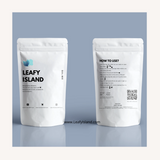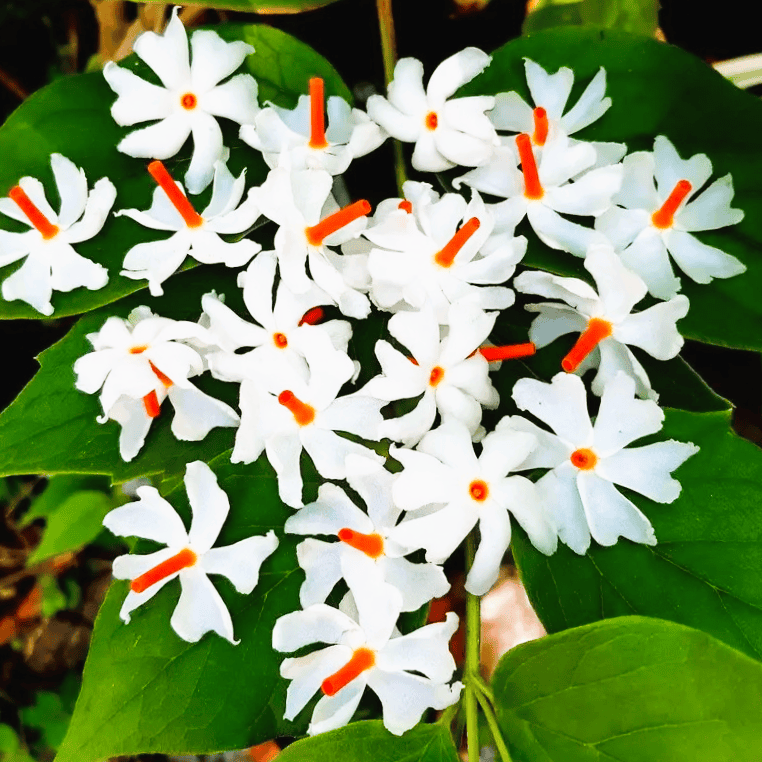Lately, there is much fervor surrounding the classy yet obliging presence of plants in the house. Whether we simply fancy walking into gardens and admiring them, or we’re dedicated gardeners ourselves, we all love the sight of lush, thriving greenery. While it’s fortunate we realized our need for plants, we must also acquaint ourselves with their most basic needs. And needless to say, nourishing soil is at the root of them all (pun intended).

The secret to a happy and healthy plant growth is the right kind of soil mix. You may have come across this fundamental truth a dozen times, surfing online for gardening tips. But what is a right soil mix, really? Organic potting soil, NPK fertilizers, low and high EC… there is a lot of confusing stuff and botanical jargon out there. Choosing the best soil composition for your plants can therefore become a tedious task.
Here, we hope we can keep things simple, and not turn this into a science lesson. We’ll talk about a few components of a well-balanced soil mixture, that’ll do a wonderful job for most plants. We’ll also stress on their benefits and how you should use them. But before deciding what potting mix is best for your plant, it’s important to first discuss the key functions and benefits of a good potting mix:
- Good soil mix holds moisture and nutrients around your plants’ roots, acting as a bank that supplies them consistently.
- It provides enough breathing space for the roots. It is critical to have a good amount of air in the soil. Not enough and usually the plant has a hard time surviving.
- It supports your plant and holds it in place, so it doesn’t struggle to anchor its roots. At the same time, it shouldn’t be too compact. It needs to aim for the right balance for holistic growth of your plants.
To fulfill these roles, you’ll generally need a mix of some essential ingredients along with common potting soil and we’ll tell you why.
Top 4 soil mix & fertilizer essentials
-
POTTING SOIL MIX
Any mass of dirt from the top layer of the earth used as a container plant growth medium is potting soil. If you’re using dirt from your garden, it already has lots of organic matter and microbes that are good for your plants. If you’re buying it from a nursery or online, vitalizing salts and hydrating agents may be added separately.
Potting soil is often nutrient-rich and can be 100% natural. Unlike non-organic soil, potting soil will always be reusable. It also allows plants to bind their roots firmly and stand strong.
However, it becomes compact easily and leads to water-logging. It’s usually heavy and dense, so it restricts proper air circulation. And it’s also less than ideal for growing seeds and fresh saplings.
Potting soil will last a long time and provide a host of natural nutrients, but it’s not sufficient alone. The other roles of a good potting mix are fulfilled by adding coco peat and a special kind of compost.

Replace your top soil every couple of months with this nutrient rich soil mix that comes with right ratio of coco peat, natural soil & vermicompost.
Let’s see what each of them does
-
COCO PEAT
 The concept of coco peat is simple. You’ve seen the stringy fibre of a coconut, right? That husky brown material is used as a potting mix for plants. That’s coco peat. It’s also commonly known as coir.
The concept of coco peat is simple. You’ve seen the stringy fibre of a coconut, right? That husky brown material is used as a potting mix for plants. That’s coco peat. It’s also commonly known as coir.
Planting in coco peat yields countless benefits, while recycling what was once a useless product. Coco peat is a superior and sustainable alternative to the more widely used peat moss. Its eco-friendly nature makes it one of the most admirable planting options on the market. It also has better aeration and water retention capacity. In addition, coco peat is completely reusable. You can just rinse and strain it, and it’ll be as good as new!
But it’s a relatively new composting option, so people are still trying to figure out how to achieve the best results.
What are the benefits of using coco peat?

Coco peat absorbs and retains much more water as compared to conventional potting soil. It also releases the water slowly so that your plants’ roots are able to drink peacefully.
Coco peat is fluffy and lightweight, so it provides plenty of aeration to roots. Once you plant in coco peat, you’ll be rewarded with faster, stronger and healthier growth!
Coco peat will take care after you take care of your plants. It’s anti-fungal and mould-resistant, so it guards against disease and pests. It maintains an ideal, neutral environment for your plants’ roots.
How much Coco Peat to be added in the soil?
Use 1 part coco peat and 1 part garden soil for foliage plants. For flowering plants, use 1 part coco peat to 2 parts of garden soil. Mixing in this ratio has shown best results in growing many exotic plants such as ferns, bromeliads, Anthurium, and orchids.
Outdoor plants tend to dry out faster, so apply a 1-inch layer of coco peat over the container soil to help retain moisture.
Coco peat can also be used as a sole growing medium for seeds or saplings. Once the shoots start to form, you can shift the plant into a new container.

Buy organic coco peat with high moisture retaining ability for your plants today.
-
VERMICOMPOST

A wide range of plant residue and organic waste makes up the raw material which is converted into vermicompost.
Let us see how.
Plant residue comprises of straw, fallen leaves, withered flower petals, twigs, and weeds and so on. Organic waste includes animal waste, poultry waste, kitchen scraps and other such things. When all of this decays, the organic matter that is formed is called compost. But when worms, particularly the species known as Red Wigglers are employed to speed up this process of decay, we get “vermi”compost.
The worms break down the contents of the compost pile into a very high quality, nutrient-rich fertilizer and soil conditioner. After the vermicomposting process, the clump of organic material takes on a more refined, granular form. It’s because what you’re looking at is actually worm excrement (called castings)! Worm castings contain many times more NPK (Nitrogen - Phosphorus -Potassium : essential plant minerals) than ordinary soil. And it’s completely natural! Plus it doesn’t contribute to landfill waste, unlike chemical fertilizers.
What are the benefits of using vermicompost?

It fosters the growth of beneficial microbes that further improve soil health and life. This makes vermicompost a replenishing and longer-lasting plant resource.
Vermicompost does not eliminate or repel pests, but it fends against them and prevents an attack. This ensures your plants’ safety in the long run.
How to add vermicompost to your soil?
Vermicompost can be directly added to the potting mix as a soil amendment, as a planting medium or used to make compost tea (compost steeped in water for a day or two) for your garden.
Use it when planting seeds or saplings, since it enhances germination and ensures stronger root growth.
For excellent results, mix it in the containers of your kitchen gardening plants. It’s known to yield better harvests for plants ranging from tomatoes to herbs and chilies.

Get organic & earthworm friendly vermicompost her
-
ORGANIC LIQUID FERTILIZER

Potted plants stay in a restricted environment, and this inaccessibility to essential nutrients results in problems like stunted growth, yellow leaves and pest attack. To supplement this, we need a power product that will bring not only sustainability but also efficiency towards the plant health.
Liquid fertilizer might just be your SoilMate!
Why Liquid? Here’s why:
The nutrient enhanced liquid fertilizer is an all-rounder product. Essential in micronutrients like Nitrogen, Phosphorus and Potassium, its liquid consistency helps plants take the fertilizer faster and use it. Furthermore, one of its major constituents is cow dung and urine giving the plant a natural boost of urea that will promote robust growth.
Organic liquid fertilizers are a powerhouse of goodness. They are biodegradable (so you actually help the environment with not releasing anything synthetic to it), earthworm friendly and 100% natural that improves soil fertility and helps the plant to grow resistance towards pests and pathogens.
What are the benefits of Liquid Fertilizers?
A balanced ratio of macro-and micro nutrients is essential for the plant to prevent nutritional deficiencies that might affect the plant health. Liquid fertilizers come with the exact proportion which is required for a healthy growth of the plant and additionally, improves the soil texture too.

Being environment friendly, it not only supports earthworm survival, but also helps enhancing soil fertility with that additional worm casting. Being a non-toxic, biodegradable product, it ensures the nitrogenous bacteria in the soil to naturally convert the atmospheric nitrogen for the plant to take up and use!
The fertilizer is a one stop sustainable and economical product that will not only help you plants but also, in due course, our planet.
How to use Liquid Fertilizers?
Till the soil thoroughly so that the fertilizer can thoroughly spread through the soil on application.
For foliage and flowering plants, add 200ml of solution in 2L of water. For foliage plants, add the solution every 30 days in winters and 45 days in summers. For flowering plants, add every 20 days in summers and 30 days in winters. For vegetable plants, add every 30 days for best results.
While there are multiple brands out there, what we recommend is go for a brand that processes fertilizers from cow manure and does the entire process organically without any chemicals. At Leafy Island, we provide 100% organic liquid fertilizer that is good for soil & plant roots.
SUMMING IT UP
At Leafy Island, we make sure you have the right combination that nourishes, preserves water, and provides an airy and sustainable home for strong, joyful roots.
We recommend using a fully-natural potting mix, because there’s no way to synthetically replicate its benefits. Chemical fertilizers supply nutrients for a single season while organic materials continue to serve for a long time.
We agree that the blending ratios of soil, coco peat and vermicompost will be different, depending on the plant you’re growing and where you’re keeping it. But it is these three vital components that will make the best potting mix. And certainly your plants will thank you for it!
Author: Siddharth Sharma
About the Author: Siddharth is a budding economics enthusiast and fervent admirer of the written word. He would love to see the world filled with innovative ventures and restore it's pristine habitats to their once dignified glory. When he's not writing, you can find him whipping up a delectable, wholesome meal. Siddharth is also a devoted plant parent and feels blessed to call Jaipur home.
The article is vetted by Leafy Island Botanist, Swastika Sarkar.


